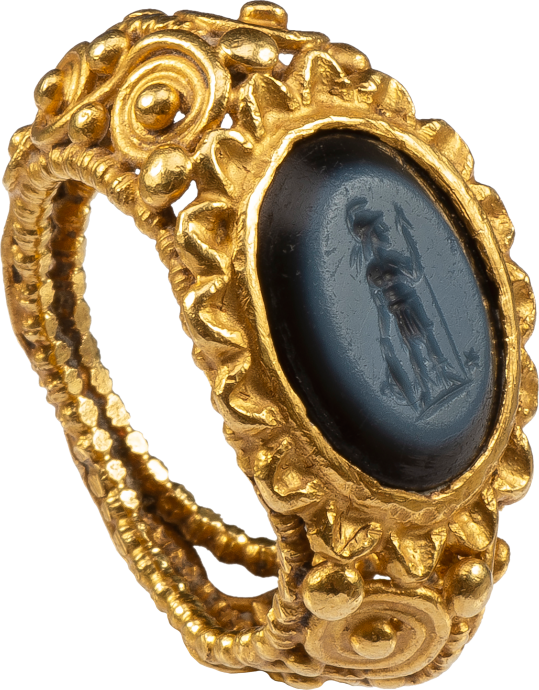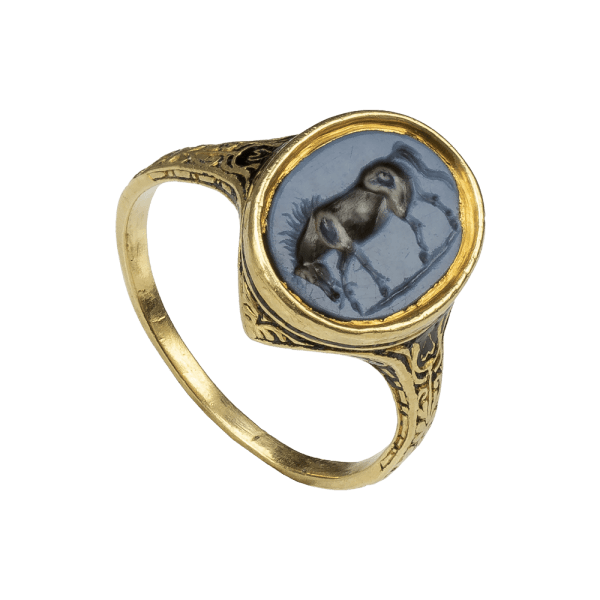


Roman Ring with Intaglio of Mars
, 4th century AD, intaglio 3rd century AD


Roman Ring with Intaglio of Mars
Description
This deceptively heavy gold ring consists of a hoop made of filigree wires. A central beaded wire forms the central part of the hoop and in the lower half is accompanied by two slightly varied beaded wires which then fork at the shoulders. Spirals of rounded wire and globules infill the shoulders. These support an oval closed setting with scalloped border inset with a nicolo intaglio that depicts a standing figure of Mars wearing helmet and holding a shield and lance. The finely cut and detailed intaglio of Mars, the god of war, agriculture, and the protector of Rome, must have had a personal significance for the wearer.
Literature:
The style of the ring conforms with the ornate designs and ostentatious display of jewelry typical of the late Roman period. Similar filigree rings found in Roman Britain of foremost importance are the examples in the late Roman hoard from near Thetford, in Norfolk, today in the British Museum, London. Two comparable rings are dated 4th century AD and described as a “basket pattern” (Catherine Johns and Timothy Potter. The Thetford Treasure Roman Jewellery and Silver. London: British Museums Publications, 1983, nos. 10 and 12). A slightly earlier parallel is in the Alice and Louis Koch Collection, Swiss National Museum, Zurich (Chadour 1994, vol. 1, no. 423, and for the scalloped border no. 468 with further references).
The gem dates earlier than the ring, 3rd century AD. For the type Mars Ultor (Mars the Avenger) based on a statue of the God in the Roman Forum, cf. Chadour, 1994, vol. 1, nos. 404 and 420 with further parallels.

